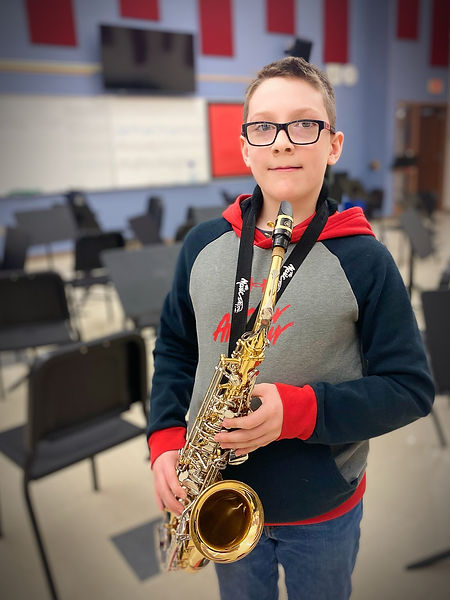
An initiative of Ottawa Elementary School District 141

Tanner Weygand
Take Your Protein Pills and Put Your Helmet On
By Nate Fisher
“One of my favorite topics is just how the world works in different ways and how people improve technology.”
The shuttle approaching Mars enters the Red Planet’s atmosphere at startling speeds. The entry phase is critical, and aerospace engineer Tanner Weygand and team have poured over countless simulations leading up to this moment. Aerobrakes deploy, and the shuttle uses the thin atmosphere to slow its descent. Heat shields gulp down friction and endure incredible stress. “Expect peak heating in thirty seconds,” one station leader calls from her terminal inside the command center. “All stations, monitor for thermal integrity.” The “roger” from the Mars One shuttle pings back to ground control. Tanner examines the current trajectory displayed on a nearby monitor, ready to troubleshoot problems with parachute deployment as the landing nears a powered descent.
Last summer, some fifteen years before the Weygand 2039 Mars Mission, Tanner visited the Kennedy Space Center in Florida, one of ten NASA field centers. “I was already interested in science,” he says, “but this is what made me love it.” He absorbed exhibits and presentations that testify to the scope of human achievement, including a breakdown of how the rocket and supporting technology for the lunar missions were built. Design has always fascinated Tanner, and the ways design is incorporated to boost the ability of machines is the draw for him to one day enter a career in engineering. Frankly, he enjoys learning about what makes everything tick. “We’re learning about the different states of matter and how they react in nature,” he says of his science class. “One of my favorite topics is just how the world works in different ways and how people improve technology.”
Tanner already has a mind for improving technology and the implications of those improvements. His opinion on electric vehicles? “I think it’s something that’s major,” he posits. “It will take a while, but if we pull it off, it might benefit the world.” Auto-driving cars are far more concerning to him: “I’m not really the biggest fan of these. I think it’s always best to learn to do it yourself before you let someone else do it for you.” With that in focus, he’s already started tackling one of humankind’s biggest exploration challenges: the eventual manned Mars landing and/or colonization.
He daydreams about what the Mars shuttle would require onboard for such a long voyage. The distance he has memorized by heart: it’s a roughly seven-month trip, about 300 million miles. Tanner has been following recent developments and informs us that one of the biggest challenges for the Mars mission is locating an effective place to land. “Thinking ahead is good,” he muses, “but I think one of the biggest challenges is to find out how much fuel you need to make it there, which is going to be expensive.” The solar power solution, in which the engineers would install solar panels on the shuttle, could generate an almost infinite amount of energy, Tanner explains. Working on a craft that could possibly reach the red planet is a pursuit he has his eye on, saying, “If I had that chance, I would leap at it.”
“Mars One, you are cleared for powered descent,” a ground control technician interrupts our present conversation. “Initiate landing engines.” Now older and highly educated in aerodynamics and engineering, Tanner nods patiently from the observation deck above the command floor. “Engines firing,” Mars One responds, the radio signal distorted, “controlling descent trajectory.”
Silence. A few murmurs around the command terminals attempt to ease the tension, but everyone braces to hear word from Mars One. Uneasy moments pass, and then an excitable transmission burst: “Landing gear deployed, Ground Control. Altitude 100 meters…50….and we have touchdown. Touchdown confirmed.” The command center erupts in cheers, and co-workers race up the stairs to where their boss, Tanner Weyland, beams with immense pride. “Congratulations, Mars One,” he says into his headset. “Welcome to Mars.”